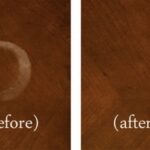DIY Cleaning Products That Do More Harm Than Good: The Hidden Dangers You Need to Know
DIY cleaning products are often seen as a natural and economical alternative to store-bought cleaners. However, not all homemade solutions are effective or safe. In fact, some DIY cleaning products can do more harm than good, potentially damaging surfaces or posing health risks. Here’s a closer look at some DIY cleaning products, why people think they work, and the reality of why they might not be the best choice.
1. Baking Soda and Vinegar Mixture
- Why People Think It Works: Baking soda and vinegar are popular DIY cleaning ingredients due to their natural and effective properties. Baking soda acts as a gentle abrasive that can help scrub away dirt and grime, while vinegar is a mild acid capable of dissolving mineral deposits and cutting through grease. When combined, the foaming reaction appears vigorous, leading people to believe it enhances the cleaning power of both ingredients. If used in the right proportions, with baking soda providing a mild abrasive action while vinegar helps to lift away grime, this mixture can seem effective for light cleaning tasks.
- The Reality: The impressive fizzing is actually a chemical reaction between the acid (vinegar) and the base (baking soda) that produces water, carbon dioxide, and sodium acetate. This reaction effectively neutralizes the cleaning power of both ingredients. While the initial abrasion from the baking soda might provide some light cleaning action, the overall mixture is mostly water and loses its effectiveness against tougher stains or greasy surfaces. Instead of enhancing their cleaning power, the combination reduces their ability to clean effectively, often leaving behind a residue that doesn’t have the strength to tackle more stubborn grime.
2. Lemon Juice for All Surfaces
- Why People Think It Works: Lemon juice is widely touted in DIY cleaning circles for its natural acidity and pleasant, fresh scent. The acid in lemon juice can cut through grease, remove stains, and even act as a mild bleaching agent, which makes it seem like an excellent choice for a variety of cleaning tasks. Additionally, because lemon juice is a natural product, many people believe it is safer and more environmentally friendly than commercial cleaners. This perception of safety and versatility leads people to use lemon juice indiscriminately on all kinds of surfaces, under the assumption that it won’t cause any harm.
- The Reality: While lemon juice does have natural cleaning abilities, its high acidity can be quite damaging to certain materials. Surfaces like marble, granite, limestone, and other natural stones contain calcium carbonate, which reacts with acids like lemon juice. This reaction causes etching—a form of surface damage that appears as dull spots or stains and can permanently alter the appearance of the stone. Over time, repeated exposure to acidic substances like lemon juice can wear away the sealant on these surfaces, making them more susceptible to stains and further damage. Even wood surfaces can suffer from the acid in lemon juice, potentially leading to discoloration or weakening of the wood finish. Therefore, while lemon juice is effective at cutting through grease, it’s not suitable for all surfaces and can lead to costly repairs or replacements if used improperly.
3. Hydrogen Peroxide on Dark Surfaces
- Why People Think It Works: Hydrogen peroxide is a go-to cleaning solution for many DIY enthusiasts because of its powerful disinfecting and bleaching properties. It is commonly used to whiten teeth, sanitize cuts, and disinfect surfaces. Because of its effectiveness in killing bacteria and viruses, many people assume it is a safe and versatile all-purpose cleaner that can be used throughout the home. The perception that a strong disinfectant can clean and protect any surface from germs drives its use on a wide variety of materials, including countertops, floors, and fabrics.
- The Reality: Although hydrogen peroxide is a potent disinfectant and bleaching agent, its strength can also be a drawback, especially on dark surfaces and fabrics. The chemical composition of hydrogen peroxide allows it to break down pigments, which is why it’s so effective at bleaching. When applied to dark countertops, fabrics, or carpets, hydrogen peroxide can cause discoloration, resulting in unsightly white spots or patches that are often irreversible. This bleaching effect can be particularly damaging on colored surfaces where maintaining the original hue is important. Moreover, hydrogen peroxide’s oxidizing nature can weaken certain materials over time, leading to damage that goes beyond just color loss. For these reasons, while it’s a great disinfectant for specific tasks, it’s too harsh for many dark or colored surfaces where its bleaching properties are not desirable.
4. Ammonia and Bleach Mixture
- Why People Think It Works: Ammonia and bleach are each recognized for their formidable cleaning powers: ammonia is excellent at breaking down greasy residues and grime, while bleach is a powerful disinfectant and whitener. The assumption is that by combining these two potent chemicals, you’ll get a supercharged cleaning solution capable of tackling the toughest messes, killing germs, and brightening surfaces all at once. This misconception stems from a logical but flawed belief that if two cleaning agents are strong individually, they must be even more effective when used together.
- The Reality: Mixing ammonia and bleach is not only ineffective, but it’s also extremely dangerous. When these two chemicals combine, they produce chloramine gases, which are highly toxic and can cause severe respiratory issues, coughing, shortness of breath, and irritation of the eyes, nose, and throat. In high concentrations, exposure to these gases can be potentially fatal. The danger lies in the chemical reaction itself, which creates a harmful environment rather than a more effective cleaner. The idea that mixing powerful cleaning agents will enhance their cleaning ability ignores the critical chemistry behind their reactions, leading to hazardous and even life-threatening conditions.
5. Homemade Window Cleaner with Dish Soap
- Why People Think It Works: Dish soap is formulated to break down grease and clean thoroughly, which leads many to believe it would also be effective on windows. When mixed with vinegar and water, a common DIY window cleaning recipe, it seems like this combination would leave glass surfaces spotless and streak-free. The thinking here is that if dish soap can effectively cut through greasy residue on dishes, it should be able to handle similar buildup on windows, especially when boosted by the degreasing action of vinegar.
- The Reality: While dish soap is excellent for dishes, it’s not formulated for use on glass. Dish soap can leave a thin film or residue on windows that attracts dust and grime, making them appear streaky and dull rather than clean and shiny. Over time, this residue builds up, requiring more frequent cleaning and making the task more cumbersome. The idea that dish soap’s effectiveness on dishes translates to other surfaces overlooks the specific formulation of cleaning agents for their intended use; dish soap is designed for food particles and grease on dishes, not the unique needs of window cleaning where a streak-free shine is desired.
6. Essential Oil Blends for Disinfecting
- Why People Think It Works: Essential oils, such as tea tree, eucalyptus, and lavender oil, have been widely marketed for their natural antibacterial and antiviral properties. Their use is often advocated in DIY cleaning circles as a natural, chemical-free alternative to traditional disinfectants. Many believe that these oils can effectively disinfect surfaces while also leaving behind a pleasant scent, making them seem like an ideal choice for natural cleaning solutions. The idea is that these oils are both safe and effective, providing a gentle cleaning option that also contributes to a pleasant-smelling environment.
- The Reality: While some essential oils do have mild antimicrobial properties, they are not potent enough to serve as a primary disinfectant, particularly in high-germ areas like kitchens and bathrooms. The concentration of active compounds in essential oils is typically too low to kill bacteria and viruses effectively, especially the more resistant strains that require strong disinfectants to eliminate. Relying on essential oils alone for disinfection can leave harmful pathogens on surfaces, increasing the risk of contamination and illness. Scientific disinfectants are specifically formulated to kill a broad spectrum of bacteria and viruses, providing a level of sanitation that essential oils simply cannot match. As a result, essential oils may smell nice and add a fresh fragrance, but they fall short when it comes to thorough disinfection.
DIY cleaning products can seem like an appealing alternative to store-bought options, but they often lack the effectiveness and safety of commercial cleaners. Understanding the limitations and potential risks of homemade solutions is crucial to ensuring a safe and clean home environment. When in doubt, it’s often best to stick with products specifically designed for the surfaces and tasks you need to address, or at the very least, research thoroughly before trying a DIY approach.





